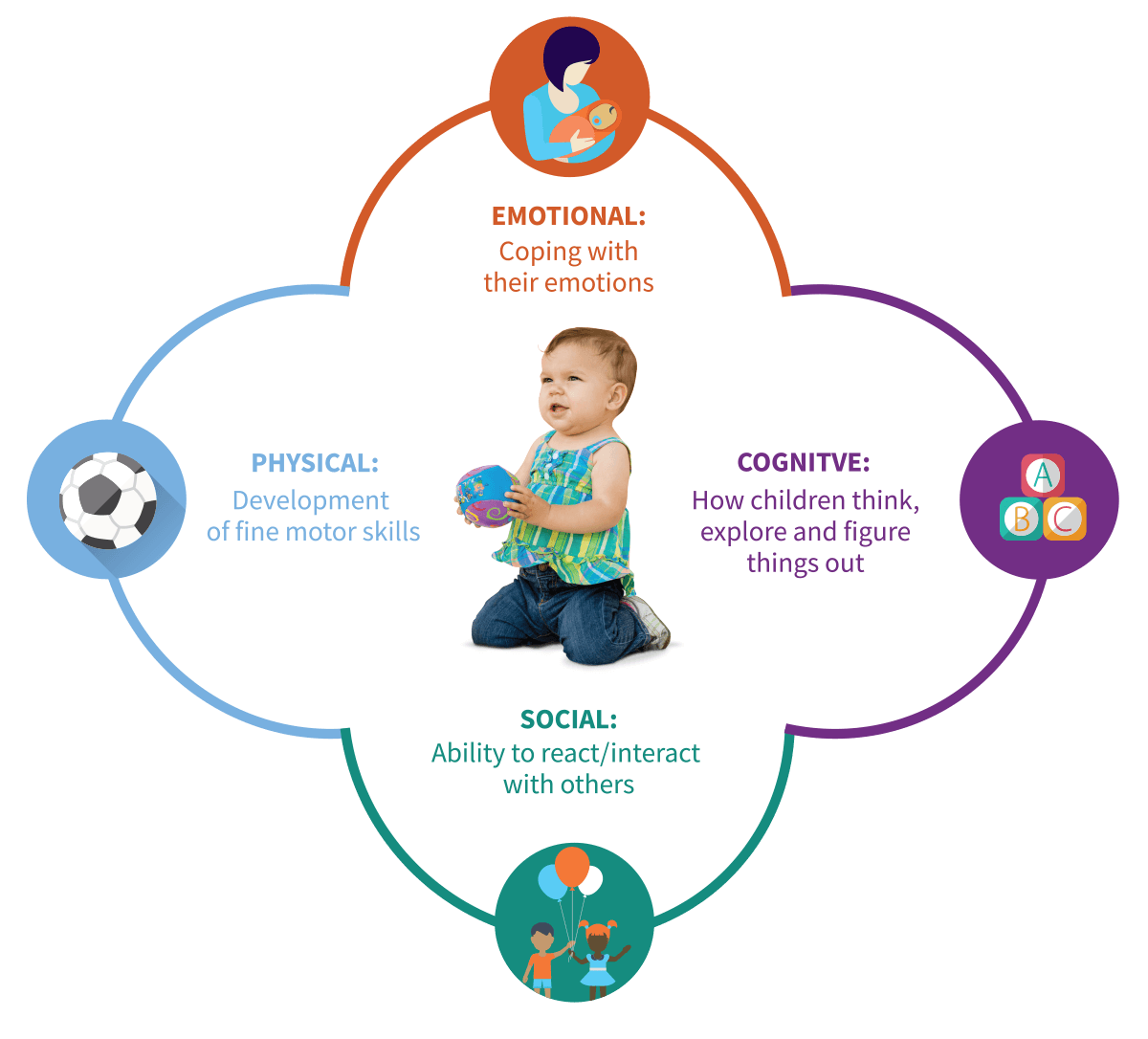We all want what’s best for our children. You’re not alone. HMG LA is here for you to help your child thrive. Help Me Grow LA connects all families to free or low-cost programs to help your child’s development. HMG LA also provides resources, tips and tools to help you support your child’s developmental milestones and skills.
Social and emotional health is one area of child development. It includes how a child responds to situations and people (temperament); the bond with a caregiver (attachment); getting along with others (social skills); and coping with their emotions (emotion regulation). As babies and children grow, their ability to form secure relationships, explore environments, and express emotions also develop. Below are a few things you can do to help your child thrive during their first 5 years of life.

Stress can be caused by different things. Some stress comes from positive experiences, like starting school or moving to a new home. Some experiences that cause stress are not positive, like physical abuse or being in the hospital. Stress that isn’t positive can either be tolerable or toxic. Tolerable stress doesn’t delay development in children and may even help it. Toxic stress, on the other hand, can delay development and affect a person’s health all their life.
Whether stress is toxic or not depends on several things: the amount, how long it lasts, and how a person reacts to it. Some things like abuse, neglect, or challenges in the home (for example, divorce, neglect,or drug use by a parent) can cause toxic stress. These things are called Adverse Childhood Experiences (ACEs).It is possible for a child to experience tolerable stress instead of toxic stress. Having a strong relationship with a reliable adult can help make stress tolerable instead of toxic.
Things like abuse and neglect can make it harder for your child to grow and develop in a healthy way. Some children that are exposed to toxic stress may take longer to develop both socially and emotionally. Children who are delayed in their social and emotional development may have difficulty later in life. Like other illnesses, social and emotional delays may be prevented or helped with care and support from trained professionals. If your child has lost the skills they once had, or if you think there could be problems with how they behave with caregivers or other children, it’s always okay to talk to your health care provider or your child’s pediatrician. Below are a few resources you can use to learn more about your child’s social and emotional health:
For more information about these services and programs visit:
RESOURCES PAGE